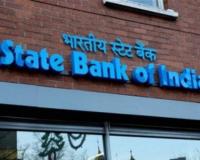SBI Cuts Lending Rates by 0.25 Percent Following RBI's Policy Decision

New Delhi, April 14, 2025 — The State Bank of India (SBI), the country's largest lender, has announced a 0.25 percent reduction in its lending rates, aligning with the Reserve Bank of India's recent cut in the benchmark repo rate. As per agency report, this move is expected to bring relief to both existing and new borrowers, making loans cheaper across several segments.
With this adjustment, SBI’s repo-linked lending rate (RLLR) will now stand reduced to 8.25 percent. Additionally, the bank's external benchmark lending rate (EBLR) has been lowered to 8.65 percent. The revised rates will come into effect from April 15, 2025.
This interest rate revision follows the RBI’s decision last week to slash the key repo rate by 0.25 percent for the second consecutive time, signaling a pro-growth monetary stance amid slowing inflation. In tandem, SBI has also revised its deposit interest rates downward by 0.10 to 0.25 percent. For term deposits up to Rs. 3 crore with a tenure of one to two years, the interest rate will now be 6.70 percent, down from 6.80 percent. Deposits maturing in two to three years will attract an interest rate of 6.90 percent instead of the previous 7 percent.
Meanwhile, HDFC Bank, a leading private sector lender, has also reduced its savings account interest rates. The bank has slashed the rate by 0.25 percent to 2.75 percent, making it one of the lowest among private banks. For deposits exceeding Rs. 50 lakh, the interest rate now stands at 3.25 percent, down from 3.5 percent. This change became effective from April 12, 2025.
In another development, Bank of India, a public sector bank, has withdrawn its special 400-day deposit scheme that offered a 7.3 percent interest rate. Simultaneously, the bank has announced a 0.25 percent reduction in interest rates on home loans, benefiting both new and existing customers.
Beyond housing loans, Bank of India has extended the rate cut to other retail loan products, including vehicle loans, personal loans, loans against property, education loans, and its Star Reverse Mortgage loan scheme. This collective rate adjustment across major banks is expected to boost borrowing and stimulate consumer spending amid an improving economic outlook.



